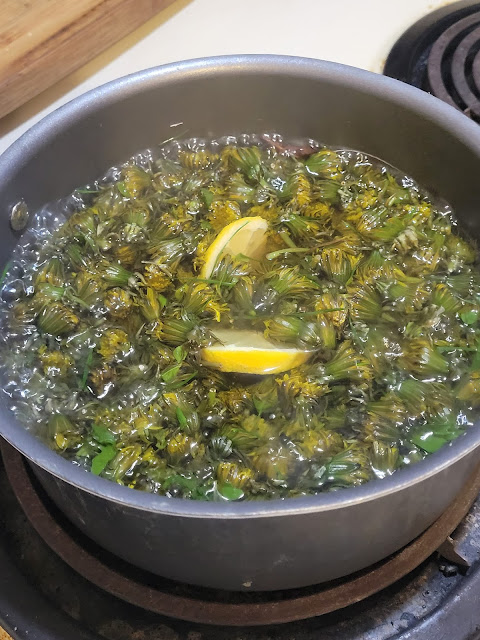Unveiling the Secrets of Homemade Kimchi: A Journey into Korean Fermentation Delights
Good morning and welcome! We're thrilled to have you here as you dive into the fascinating world of fermented foods.
In this article, we'll explore the wonders of homemade kimchi—an iconic Korean dish that captures the hearts and palates of many. As a fellow kimchi enthusiast, you understand the profound impact this traditional side dish has on one's culinary experience. Join us on this exciting journey as we delve into the art of making kimchi, sharing a delightful recipe that will keep your refrigerator stocked with this beloved staple every two months. Discover the secrets to creating mouthwatering, tangy, and probiotic-rich kimchi that will leave you craving for more.
Recipe: Homemade Kimchi
Ingredients:
- - 1 medium Napa cabbage
- - 1/2 cup coarse sea salt
- - 4 cups water (for brine)
- - 1 tablespoon grated ginger
- - 4 cloves garlic, minced
- - 1 tablespoon Korean red pepper flakes (gochugaru)
- - 2 teaspoons fish sauce (optional, for umami flavor)
- - 2 teaspoons sugar
- - 2 green onions, chopped
- - 1 medium carrot, julienned
- - Optional: Radish, daikon, or other vegetables for variation
Equipment:
- - Large mixing bowl
- - Colander
- - Glass jars with airtight lids
Instructions:
1. Prepare the Cabbage:
- Cut the Napa cabbage lengthwise into quarters.
- Remove the core and chop the cabbage into bite-sized pieces.
- Place the cabbage in a large mixing bowl.
2. Salt and Rest:
- Dissolve the sea salt in the water to create a brine.
- Pour the brine over the chopped cabbage, ensuring it is fully submerged.
- Cover the bowl with a clean kitchen towel and let it rest at room temperature for about 2 hours. This process helps to draw out excess moisture from the cabbage.
3. Rinse and Drain:
- After 2 hours, rinse the cabbage thoroughly under cold running water to remove excess salt.
- Place the rinsed cabbage in a colander and let it drain for 15-20 minutes. Gently squeeze to remove any remaining water.
4. Create the Kimchi Paste:
- In a separate bowl, combine the grated ginger, minced garlic, Korean red pepper flakes, fish sauce (if using), and sugar. Mix well to form a paste.
5. Assemble the Kimchi:
- In the large mixing bowl, combine the drained cabbage, kimchi paste, chopped green onions, and julienned carrot.
- Wearing food-safe gloves, gently massage the paste into the cabbage, ensuring each piece is coated evenly. This step allows the flavors to penetrate the cabbage.
6. Fermentation and Storage:
- Transfer the kimchi mixture into clean glass jars, pressing it down firmly to remove any air bubbles.
- Leave about 1 inch of headspace in each jar to allow for expansion during fermentation.
- Seal the jars with airtight lids and let them ferment at room temperature for 1-2 days. Keep an eye on the fermentation process as it progresses, as warmer temperatures may expedite the fermentation.
7. Refrigerate and Enjoy:
- Once the kimchi has reached your desired level of fermentation, refrigerate the jars to slow down the fermentation process.
- Allow the kimchi to chill for at least 24 hours before enjoying the tangy and flavorful results.
- Kimchi can be stored in the refrigerator for several weeks, with the flavors intensifying over time.
Congratulations on embarking on your fermentation journey, with kimchi being your delightful companion!
By mastering the art of homemade kimchi, you can ensure a constant supply of this beloved Korean staple in your refrigerator. The tangy and probiotic-rich flavors of kimchi are not only tantalizing to the taste buds but also offer numerous health benefits. As you explore the world of fermentation, let the process of making kimchi ignite your passion for experimenting with additional fermented foods. Embrace the joy of creating your own unique variations, and savor the satisfaction that comes with each homemade batch of kimchi. Get ready to enjoy the vibrant flavors and cultural richness that kimchi brings to your dining table.





















Comments
Instead of sugar use apple and pears.They do the same work without the sugar.This recipe coming from a Korean guy-his mam-
ReplyDelete